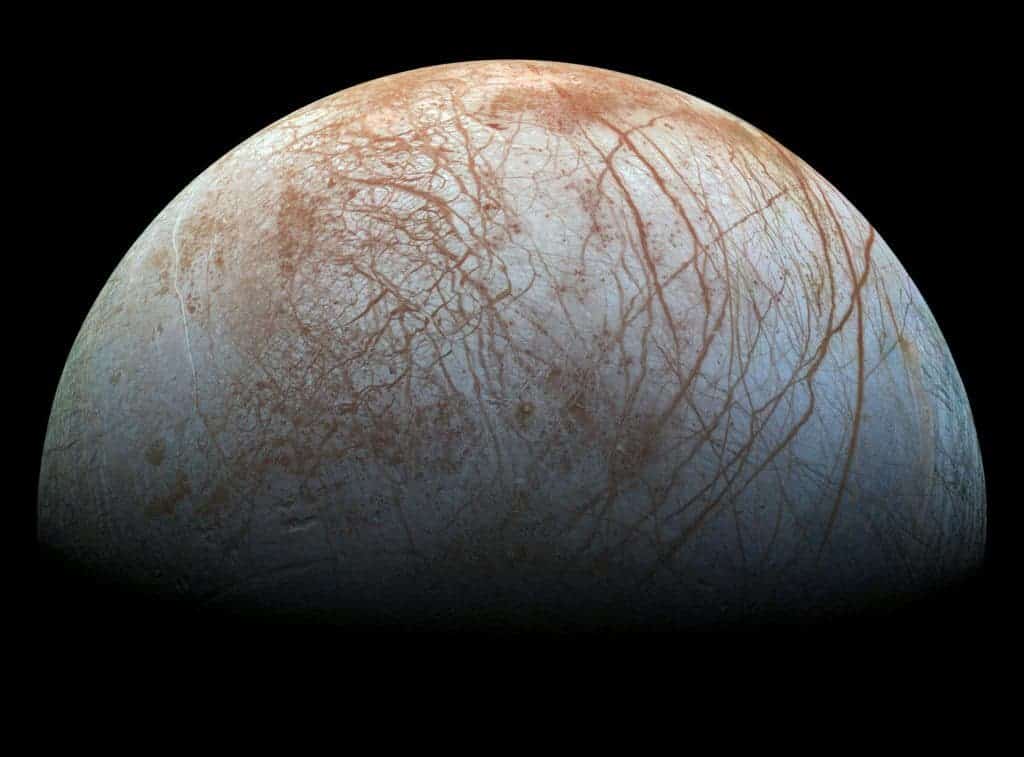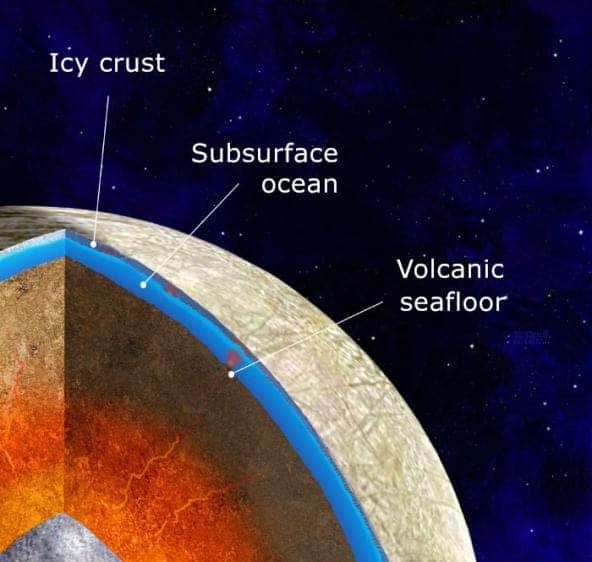
Astronomers have had their eyes on Europa for some time. At first glance, there’s not much going on in this barren world, but this frozen satellite actually has a lot going for itself. For one, it may not be barren. From ground-based observations, researchers have known that Europa’s surface is mostly covered with water ice, but in recent years, we’ve found compelling evidence of a salty, liquid ocean beneath the frozen crust, as well as active seafloor volcanoes pulsing on the seafloor.
Life as we know it seems to have three main requirements: liquid water, the appropriate chemical elements, and an energy source — and all three may be on Europa.
The problem of radiation
Now, in a new study, a computer model estimates that the surface of Europa has been churned through a process called “impact gardening”. According to the studies, the first 12 inches (30 cm) have been churned over tens of millions of years. This means that the top 30 cm of Europa has been exposed to radiation, which would have likely destroyed all signs of life, should these signs exist.
Life on Earth is shielded from radiation thanks to our atmosphere and magnetic field, which keeps the most harmful parts of solar radiation at bay. Other celestial bodies, like our Moon or Europa, are not as fortunate, and they are constantly bombarded. The ice sheet could protect life forms on Europa if they live deep enough beneath it. But if these life forms (or their chemical signatures) were to reach the surface, they would almost certainly be destroyed.
The atmosphere also protects us from impacts from asteroids and meteorites — that’s why the Moon, for instance, is riddled with impact craters, and the Earth is far less affected because many of these bodies burn up in the atmosphere. These impacts also churn some material to the surface, exposing it to radiation.
So if we want to look for signs of life on Europa, we have to dig a bit deeper.
“If we hope to find pristine, chemical biosignatures, we will have to look below the zone where impacts have been gardening,” said lead author Emily Costello, a planetary research scientist at the University of Hawaii at Manoa. “Chemical biosignatures in areas shallower than that zone may have been exposed to destructive radiation.”
“Even at higher latitudes, at which biosignatures may be preserved against radiation at centimetre depths, impact gardening cycles material upwards to the surface and may thwart the hopes of preservation and sampling at shallow depths,” Costello and her colleagues said in the study.

Impact gardening on Europa has been proposed before, but this new study offers some of the most comprehensive support for it. In addition, it also estimates the depth to which it happens.
This is the first to take into account secondary impacts caused by debris raining back down onto Europa’s surface after being kicked up by an initial impact. The research also suggests that Europa’s mid- to high-latitudes would be less affected by the double whammy of impact gardening and radiation — so that’s where we should probably start looking for signs of life.
“This work broadens our understanding of the fundamental processes on surfaces across the solar system,” said Cynthia Phillips, a Europa scientist at NASA’s Jet Propulsion Laboratory in Southern California and a co-author of the study. “If we want to understand the physical characteristics and how planets in general evolve, we need to understand the role impact gardening has in reshaping them.”
While no mission directly to the surface of Europa is planned, NASA’s Europa Clipper is set for launch in 2024. The spacecraft will conduct a series of close flybys of Europa, carrying instruments to both survey the moon remotely as well as analyze samples of the dust and gases ejected from Europa’s surface.

The study has been published in Nature.


